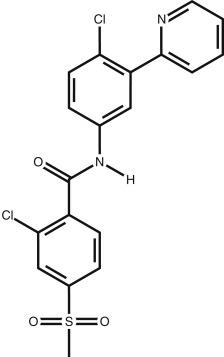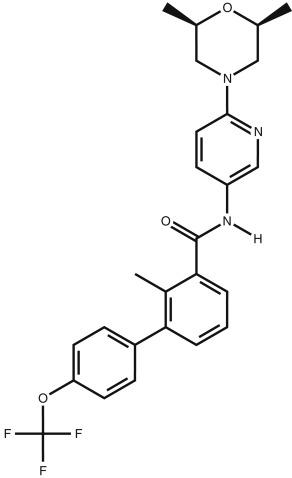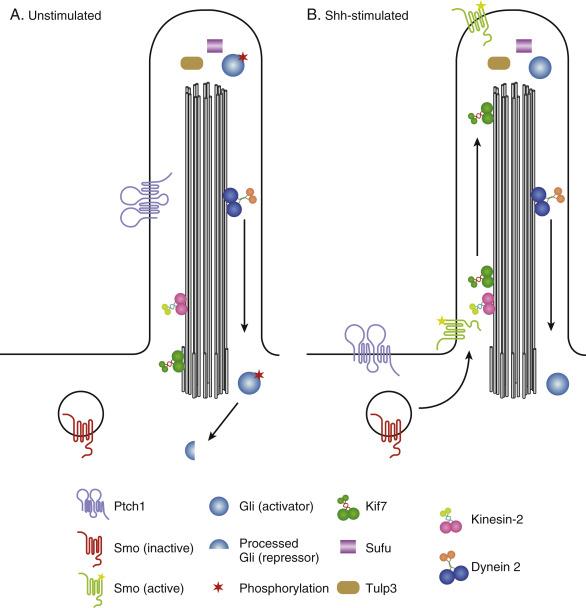Physical Address
304 North Cardinal St.
Dorchester Center, MA 02124
Q38.1 What are the US Food and Drug Administration (FDA)-approved indications for vismodegib and sonidegib? (Pg. 422x2)
Q38.2 What are the various off-label uses for Hedgehog (Hh) pathway inhibitors? (Pgs. 423x4, 424x3)
Q38.3 What are potential adverse effects of vismodegib and sonidegib? (Pgs. 424x3, 426, 427)
Q38.4 What does the evidence suggest regarding Hh inhibitor risk to the embryo/fetus in pregnant females? (Pg. 424x2)
Q38.5 Where along the Hh pathway may mutations occur that confer drug resistance? (Pg. 426)
Q38.6 What are the differences in metabolic/excretion pathways between itraconazole and posaconazole and what are the implications for drug–drug interactions? (Pg. 427x2)
α-1-Acid glycoprotein
Adverse effect(s)/event(s)
Aspartate transaminase
Arsenic trioxide
Basal cell carcinoma
B-cell lymphoma-2 (an apoptosis inhibitor)
Basal cell carcinoma outcomes with LDE225 treatment
B-rapidly-accelerated fibrosarcoma
Cyclin-dependent kinase inhibitor 2A
Confidence interval
Creatine kinase
Maximal concentration
C-myelocytomatosis
Cyclooxygenase-2
Cytochrome P450
Desert hedgehog
Dose-limiting toxicity
Extracellular matrix
Epidermal growth factor receptor
Extracellular regulated kinase
Gastroesophageal reflux disease
Glioma-associated oncogene
Graft-versus-host disease
Hedgehog
Indian hedgehog
c-Jun N-terminal kinase
Keratinocystic odontogenic tumor
Locally advanced basal cell carcinoma
Mitogen-activated protein kinase
Metastatic basal cell carcinoma
Mitogen-activated protein kinase
Maximum tolerated dose
Nevoid basal cell carcinoma
Neurofibromatosis type 1
Non-Hodgkin lymphoma
Neuroblastoma-RAS
Protein 38
Programmed death
Patched-1
Response Evaluation Criteria in Solid Tumors
Squamous cell carcinoma
Systemic sclerosis
Sonic hedgehog
Smoothened
Suppressor of fused
Half-life
T-cell receptor
Time to peak concentration
Transformation-related protein 53
Upper limit of normal
United States
Wingless/Integrated
The Hedgehog (Hh) was first identified in mutant fruit flies by Christine Nusslein and Eric Wiechaus in 1980. It took its name from a polypeptide ligand called Hedgehog that, when mutated, led to fruit fly larvae with a spiky, hairy pattern of denticles, similar to that of hedgehogs. The first Hh pathway inhibitor, however, was discovered long before the pathway. After finding that sheep consuming the plant Veratrum californicum (corn lily) gave birth to offspring with cyclopia, researchers concluded in 1968 that this birth defect was attributed to a compound named cyclopamine. This steroidal alkaloid, derived from the Californian corn lily plant, demonstrated its teratogenic effect via binding and inhibition of smoothened (SMO), a G-protein-coupled transmembrane receptor key in the Hh pathway. Because of poor stability and undesirable off-target effects, cyclopamine is not used in humans; however, modifications led to the development of other Hh pathway inhibitors that include vismodegib and sonidegib. The Hh signaling pathway went on to be recognized as key in the regulation of cell proliferation, fetal development, tissue patterning, and cell fate during embryonic development. It also plays an integral role in maintenance of stem cell populations, regulation of hair follicles, development of sebaceous glands, and in the pathogenesis of a variety of neoplasms. As such, it has been targeted in the treatment of a variety of malignancies that include liver cancer, prostate cancer, ovarian cancer, medulloblastoma, and gastric and gastrointestinal tumors. It has also been studied in a number of dermatologic conditions including Merkel cell carcinoma and the cutaneous manifestations of graft-versus-host disease (GVHD). Most recently, Hh pathway blockade has been used as a novel therapeutic in the treatment of basal cell carcinoma (BCC).
Vismodegib is a first-in-class agent selectively targeting the Hh signaling pathway for treatment of patients with locally advanced and metastatic BCC. Approved in 2012 in the United States, it is now approved in more than 60 countries worldwide including the European Union, Switzerland, Canada, Australia, Mexico, Israel, and South Korea. Sonidegib was approved shortly thereafter in 2015, and several additional Hh pathway inhibitors are currently under development.
Vismodegib, described chemically as 2-chloro-N-(4-chloro-3-(pyridin-2-yl)phenyl)-4-(methylsulfonyl)benzamide, and by its trade name, Erivedge, has a molecular formula C 19 H 14 C l2 N 2 O 3 S and a molecular weight of 421.292 g/mol ( Fig. 38.1 , Table 38.1 ). Sonidegib, described chemically as N-[6-[(2S,6R)-2,6-dimethylmorpholin-4-yl]pyridin-3-yl]-2-methyl-3-[4-(trifluoromethoxy)phenyl]benzamide, and by its trade name, Odomzo, has a molecular structure, C 26 H 26 F 3 N 3 O 3 , and a molecular weight of 485.507 g/mol ( Fig. 38.2 ; see Table 38.1 ).

| Trade Name | Generic Available | Manufacturer | Tablet or Capsule Sizes | Standard Dosage | |
|---|---|---|---|---|---|
| Vismodegib | Erivedge | No | Genentech Inc. | 150 mg | 150 mg PO QD |
| Sonidegib | Odomzo | No | Novartis Pharmaceuticals | 200 mg | 200 mg PO QD |

The single dose bioavailability of vismodegib is 31.8%, with absorption being saturable as evidenced by a lack of dose-proportional increases in bioavailability following increases in dosing. Vismodegib may be taken without regard to meals, as systemic levels at steady state are not affected by food. Its volume of distribution ranges from 16.4 L to 26.6 L with plasma protein binding greater than 99%. Vismodegib binds to both human serum albumin and α-1-acid glycoprotein (AAG) with binding to AAG being saturable.
Sonidegib is quickly absorbed in the fasted state, and thus the recommended dose is 200 mg orally once daily taken on an empty stomach, at least 1 hour before or 2 hours after a meal (see Table 38.1 ). A high-fat meal, however, (approximately 1000 calories with 50% calories from fat) may increase exposure to sonidegib. Following the administration of a single dose (100–300 mg) under fasted conditions in patients with cancer, the median time to peak concentration (Tmax) was 2 to 4 hours. Less than 10% of an oral dose is absorbed, however (roughly 6%–7%). Sonidegib exhibited dose-proportional increases in maximal concentration (Cmax) over the dose range of 100 mg to 400 mg, but less than dose-proportional increases at doses greater than 400 mg. Estimated volume of distribution is 9166 L, suggesting high tissue distribution. Sonidegib is over 97% bound to plasma proteins and binding is independent of concentration.
Greater than 98% of the total circulating vismodegib drug-related components are the parent drug. Metabolic pathways of vismodegib in humans include oxidation, glucuronidation, and pyridine ring cleavage. The two most abundant oxidative metabolites, produced by recombinant cytochrome P-450 (CYP)2C9 and CYP3A4/5, are eliminated along with their parent drug primarily by the hepatic route (82% of the administered dose is recovered in the feces and 4.4% is recovered in urine). The estimated elimination half-life (t 1/2 ) of vismodegib is 4 days after continuous once-daily dosing and 12 days after a single dose. In patients with mild hepatic impairment (normal total bilirubin and aspartate transaminase [AST] above the upper limit of normal [ULN] or total bilirubin over 1 to 1.5 times the ULN), the mean systemic vismodegib exposure has been reported to increase 24%, compared with patients with normal hepatic function. Systemic exposure was increased 31% in patients with moderate impairment (total bilirubin >1.5 to 3 times ULN) and decreased 14% in patients with severe impairment (total bilirubin >3 to 10 times ULN), respectively, compared with patients with normal hepatic function.
The predominant circulating compound after sonidegib administration is reported to be unchanged parent drug. Nonetheless, sonidegib is primarily metabolized by the CYP3A4 enzyme via oxidation and amide hydrolysis. Its estimated t 1/2 is approximately 28 days. Sonidegib and its metabolites are eliminated primarily via the hepatic route. Of the absorbed dose, approximately 70% is reported to be eliminated in the feces and 30% in the urine. Unchanged sonidegib was not detectable in the urine.
There are several key components of the Hh signaling pathway that include membrane receptors patched-1 (PTCH1) and SMO. PTCH1 is a 12-pass transmembrane receptor that suppresses the Hh signaling cascade and SMO is a 7-pass transmembrane protein with which PTCH1 is intricately linked. Hh ligands include Sonic hedgehog (Shh), Indian hedgehog (Ihh), and Desert hedgehog (Dhh). PTCH1 normally binds to and inhibits SMO; however, binding of Hh ligands allows the release of SMO. When no longer bound to PTCH, SMO migrates to the primary cilium, a small hair-shaped projection that emanates from the surface of many mammalian cells. Here, it disinhibits suppressor of fused (SUFU) and thereby leads to transcription of glioma-associated oncogene (Gli) transcription factors Gli1, Gli2, and Gli3 that regulate proliferation and cell growth. In the absence of ligand, Glis are phosphorylated, ubiquinated, and partly cleaved to generate repressor forms that prevent downstream Hh signaling. Upon translocation of SMO into the primary cilium, however, such proteolytic processing is prevented and the lengthy active form of Gli allows for the transcription of target genes ( Fig. 38.3 ). Mutations in this pathway can come in the form of a loss of function mutation in at least one allele of PTCH1 or a gain of function mutation in SMO. Approximately 80% to 90% of BCC are caused by the former, while the remainder are largely driven by the latter. In either case, the result is constitutive activation and unrestrained basal cell proliferation in the case of BCC. Hh inhibitors such as vismodegib and sonidegib act by binding SMO, restoring its inhibition and preventing it from migrating to the primary cilium and activating Gli transcription factors. It is unclear whether vismodegib is as effective, however, in the 10% of BCC driven by activating SMO mutations. There have also been reports of BCC induced by SUFU mutations as well, in which case SMO inhibition would also be less likely to be effective.

In addition to direct antagonism, Hh inhibitors have also been noted to promote substantial alterations in the immune microenvironment with an intra- and peritumoral increase in cytotoxic CD8 T cells and an upregulation of major histocompatibility complex (MHC) class I during tumor regression. Additionally, a reduction in primary cilia was observed after Hh pathway treatment. The Hh signaling pathway also reduces the strength of the T-cell receptor (TCR) signal in mature peripheral T cells such that repression of the pathway in T cells increases T-cell activation. This contributes to a disruption of immune privilege involving an influx of cytotoxic T cells and a profound alteration of the local chemokine/cytokine network.
Locally advanced BCC (LABCC) represents roughly 1% to 10% of all BCC and may represent tumors with large size, recurrence, involvement of key anatomic structures, or extensive invasion below the skin to involve cartilage, muscle, bone, or local lymph nodes. Metastatic BCC (MBCC) account for 0.0028% to 0.5% of all BCC and typically meet three criteria: (1) the primary tumor originated from the skin and not the mucous membranes or other glands, (2) metastasis occurred to a distant site from the primary tumor, not as a result of direct extension, and (3) both metastatic and primary tumors have the same histopathology. The reported median survival time in MBCC has ranged from 8 months in earlier studies to 7 years in more recent studies, which may be in part because of the development of novel therapies such as Hh pathway inhibitors.
Q38.1 In January 2012, the US Food and Drug Administration (FDA) approved the use of vismodegib (GDC 0449) in locally advanced or metastatic BCC following a key phase II trial, ERIVANCE BCC. This multinational, single-arm, two-cohort, open-label trial included 104 patients with advanced BCC, of whom 71 had locally advanced and 33 had metastatic BCC. A control group was not used in this study, given the small patient population, the historical absence of spontaneous responses, and the lack of available therapies. The primary endpoint was the objective response rate as assessed by independent review. For MBCC, the Response Evaluation Criteria in Solid Tumors (RECIST) guidelines were used. The objective response rate, according to independent review, was 30% (95% confidence interval [CI] 16–48, P = .001). According to the assessments made by the site investigators, responses were observed in 45% of patients (95% CI 28–62). Concordance between the response assessments made by the independent reviewer and those made by the site investigators was 79%. The majority of these patients (24 of 33 [73%]) experienced partial responses with tumor shrinkage, according to independent review. The median duration of progression-free survival was 9.5 months, whereas the median duration of response was 7.6 months for all patients.
Q38.1 In July 2015, sonidegib (LDE225) was approved by the FDA for adults with LABCC that has recurred following surgery or radiation therapy, or for adults with LABCC who are not candidates for surgery or radiation. Before its approval, a phase I trial was undertaken including 103 patients with advanced solid tumors (including 16 with advanced BCC) to determine the maximum tolerated dose (MTD) and dose-limiting toxicity (DLT) of sonidegib. The MTD was 800 mg daily or 250 mg twice daily. An objective tumor response was seen in 37.5% (6/16) of patients with advanced BCC according to RECIST 1.0. These results included five partial and one complete response.
The Basal Cell Carcinoma Outcomes with LDE225 Treatment (BOLT) trial is a phase II international randomized, double-blind trial to assess the safety and efficacy of two doses of sonidegib in patients with advanced BCC. Tumor assessment was done with RECIST 1.1 in patients with MBCC and with modified RECIST in LABCC. The trial enrolled 230 patients (194 LABCC and 36 MBCC), of whom 79 received sonidegib 200 mg and 151 received sonidegib 800 mg. In patients with LABCC, the objective response rate by central review was 43% (95% CI 28–59) for 200 mg daily and 38% (95% CI 28–48) in the 800-mg daily group. For patients with MBCC, the objective response rate by central review was 15% (95% CI 2–45) and 17% (95% CI 5–39) for 200 mg and 800 mg daily, respectively. In an update to this trial that was subsequently published, the objective response rates for patients with LABCC were 56% at 200 mg daily and 45% at 800 mg daily. For MBCC, the objective response rate was 8% at 200 mg daily and 17% at 800 mg daily. Other Hh pathway inhibitors are in various stages of development as well, including a novel SMO antagonist, MK-4101. This drug is structurally dissimilar from other marketed SMO antagonists in clinical development and has shown excellent drug-like properties, is brain-permeable, and potentially active on clinically relevant SMO mutants.
Q38.2 There have been data published on several additional uses of Hh inhibitors in the context of BCC including for nevoid BCC (NBCC) syndrome, neoadjuvant therapy, and in chemoprevention of BCC in patients at high risk of developing additional lesions.
Become a Clinical Tree membership for Full access and enjoy Unlimited articles
If you are a member. Log in here